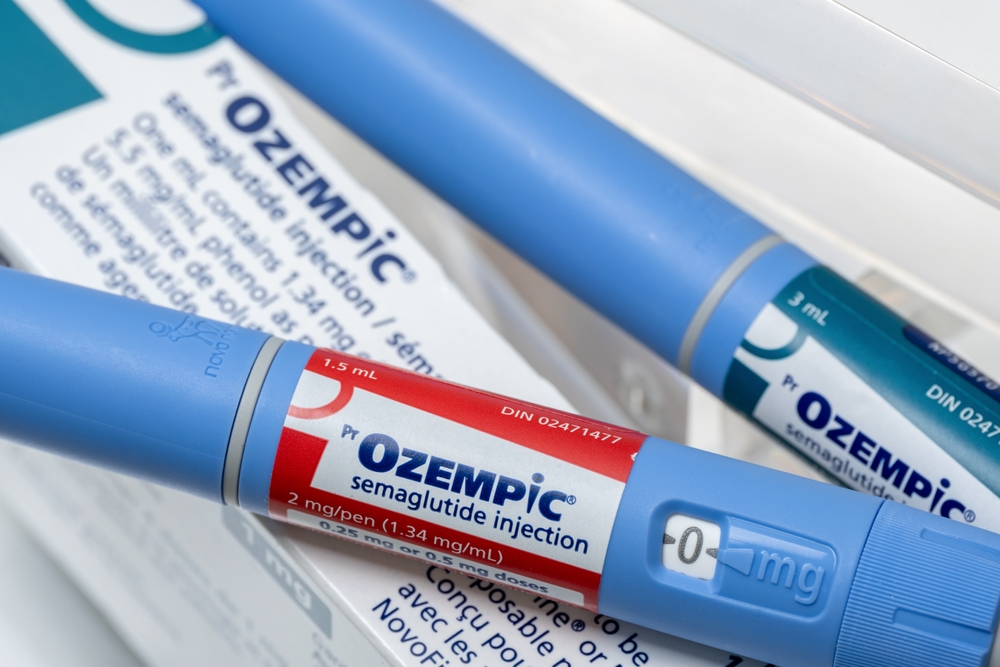SGLT2 inhibitors and GLP-1 receptor agonists represent significant advances in the treatment of type 2 diabetes, but there are challenges in providing equitable access to these medicines.
Two medicine classes, sodium-glucose cotransporter 2 (SGLT2) inhibitors and glucagon-like peptide-1 receptor agonists (GLP-1 RAs) represent enormous advances in the fields of diabetology, nephrology and cardiology. These medication classes pose key implementation challenges. SGLT2 inhibitors and GLP-1 RAs have major cardiorenal benefits for people living with type 2 diabetes. Optimal use of these medicines is critical as cardiovascular disease (CVD), heart failure (HF) and chronic kidney disease (CKD) are common causes of morbidity, mortality, health care use and expenditure for people living with type 2 diabetes.
Importantly, the cardiorenal benefits of SGLT2 inhibitors are independent of glycaemic effects. This also appears to be the case for GLP-1 RAs. Despite these developments, we found that only one-third of Australians aged 40 years and over that initiated metformin (the first-line therapy for type 2 diabetes) between 2018 and 2020 had add-on glucose-lowering medicine subsidised through the Pharmaceutical Benefits Scheme (PBS) within two years of metformin initiation. Of those with add-on therapy, less than half of first add-on therapies were medicines with cardiorenal benefits (SGLT2 inhibitors and GLP-1 RAs).
During the study period, SGLT2 inhibitors were subsidised on the PBS for type 2 diabetes if a patient’s glycated haemoglobin (HbA1c) was > 7% despite treatment with metformin. GLP-1 RAs were subsidised if a patient’s HbA1c was > 7% despite treatment with metformin and if the patient had a contraindication to or was intolerant to a sulfonylurea. As we do not have HbA1c data, we do not know the proportion of the study population that were eligible for SGLT2 inhibitor/GLP-1 RA therapy on the PBS. However, our findings likely represent underuse of very effective pharmacotherapy.

The implementation challenges
SGLT2 inhibitors and GLP-1 RAs have some shared implementation issues, and some issues that are unique to each medicine class. GPs are the major prescribers for type 2 diabetes medicines and, importantly, can potentially initiate medicines with cardiorenal benefits early in the treatment of type 2 diabetes. However, are GPs being adequately supported given the speed of advances in this area, and are they being adequately funded to manage multimorbidity?
The speed of developments is also a challenge for medicine regulatory bodies and payers. Cost-effectiveness is the primary consideration for payers and from mid-2024, for a patient to be eligible for a GLP-1 RA on the PBS for the treatment of type 2 diabetes, the patient needs to have a contraindication, be intolerant or inadequately respond to an SGLT2 inhibitor (inadequate response refers to glycaemic response). This change was made because of the high use of GLP-1 RAs outside of PBS restrictions, and the high cost of GLP-1 RAs versus comparator treatments. SGLT2 inhibitors have a positive Pharmaceutical Benefits Advisory Committee (PBAC) recommendation as add-on therapy to metformin for people with type 2 diabetes and established CVD or high cardiovascular risk “without the requirement to have a specific unmet glycaemic target”. Indeed, the SGLT2 inhibitor PBS listing for type 2 diabetes has very recently changed, consistent with the PBAC recommendation. This is a major step forward to enable improved usage of SGLT2 inhibitors early in the treatment of type 2 diabetes that is consistent with clinical trial evidence. However, educating health care providers and consumers of PBS listing changes is key.
With respect to GLP-1 RA use, there are many issues related to the use of this medicine class. Ozempic (generic name: semaglutide) saturates the media space, and potentially Australians with type 2 diabetes are less aware of SGLT2 inhibitors, a medicine class with substantial cardiorenal benefits, particularly for HF and CKD, and considered more cost-effective than GLP-1 RAs. There is excess demand for GLP-1 RAs and significant shortages, which can be distressing to patients. It is not entirely clear that people with most need for GLP-1 RAs (people with type 2 diabetes or people who are overweight/obese with obesity-related comorbidities) are those receiving these medicines. This is largely due to the lack of publicly available datasets capturing private prescriptions (non-PBS prescriptions). Additionally, the considerable private demand for GLP-1 RAs and other costly anti-obesity medicines, such as tirzepatide, may pose a potential issue in future with respect to price negotiations when a pharmaceutical company requests to have a PBS listing for a medicine.
Providing equitable access
How do we address these many challenges and try to ensure quality and equitable use of SGLT2 inhibitors and GLP-1 RAs? In part due to these pharmacotherapies that treat many interconnected organs/systems, the American Heart Association released a presidential advisory about cardiovascular-kidney-metabolic (CKM) syndrome in late 2023. They noted that barriers to implementation of pharmacotherapies for CKM syndrome include “a fragmented health care delivery system, specialty silos, disparities in access to specialist care and therapies, financial toxicity of the newer pharmacotherapies and clinician inertia”, which necessitated “disruptive models of CKM health care delivery”. Indeed, we need to consider new models of care that are interdisciplinary and strongly involve primary care providers including GPs, nurses and pharmacists. Furthermore, we need to better educate and engage patients with type 2 diabetes, so they are aware of the cardiorenal benefits of SGLT2 inhibitors and GLP-1 RAs. Patients with type 2 diabetes and obesity have an important voice on equitable access to medicines. Finally, we need access to datasets that capture private dispensing of medicines.
While challenging, we are faced with a great opportunity to bridge this implementation gap between clinical evidence and practice. Effective change will require cooperation across all levels of the health system (primary, secondary and tertiary care, government, research institutes and pharmaceutical companies).
Dr Tamara Milder is an endocrinologist at St Vincent’s Clinic, Sydney and Research Associate in the Medicines Intelligence Research Program, School of Population Health, UNSW.
Prof Sallie Pearson is the Professor of Health Systems and head of the Medicines Intelligence Research Program, School of Population Health, UNSW.
A/Prof Brendon Neuen is the Director of Kidney Trials at Royal North Shore Hospital and Senior Research Fellow at the George Institute for Global Health.
Prof Carol Pollock is Professor of Medicine at the University of Sydney and chair of Kidney Health Australia.
Prof Jerry Greenfield is Head of Department of Endocrinology and Diabetes, St Vincent’s Hospital, Sydney and is Head of St Vincent’s Clinical Campus, UNSW.
Prof Richard Day is Head of Department of Clinical Pharmacology and Toxicology at St Vincent’s Hospital and professor of clinical pharmacology, UNSW.
A/Prof Michael Falster is a Senior Research Fellow and Heart Foundation Future Leader Fellow in the Medicines Intelligence Research Program, School of Population Health, UNSW
Conflicts of interest
TM has been a speaker for a Boehringer Ingelheim talk but has not received speaker fees. SP is a member of the Drug Utilisation Sub Committee of the Pharmaceutical Benefits Advisory Committee. The views expressed in this paper do not represent those of the Committee. BN has received fees for travel support, advisory boards, scientific presentations and steering committee roles from AstraZeneca, Alexion, Bayer, Boehringer and Ingelheim, Cambridge Healthcare Research, Cornerstone Medical Education, Janssen, the limbic, and Medscape, with all honoraria paid to The George Institute for Global Health. CP has Advisory Board membership for AstraZeneca and has been a speaker for AstraZeneca, Bayer, Boehringer Ingelheim and Otsuka. CP has been a steering committee member for meetings for Novo Nordisk and AstraZeneca. JG has received fees for scientific talks from Novartis, Novo Nordisk, Amgen, Allergan, Boehringer Inglheim, Lilly, Abbott and the Limbic. He has received study medication from Novo Nordisk. RD and MF have no conflicts to declare.
The statements or opinions expressed in this article reflect the views of the authors and do not necessarily represent the official policy of the AMA, the MJA or InSight+ unless so stated.
Subscribe to the free InSight+ weekly newsletter here. It is available to all readers, not just registered medical practitioners.
If you would like to submit an article for consideration, send a Word version to mjainsight-editor@ampco.com.au.

 more_vert
more_vert